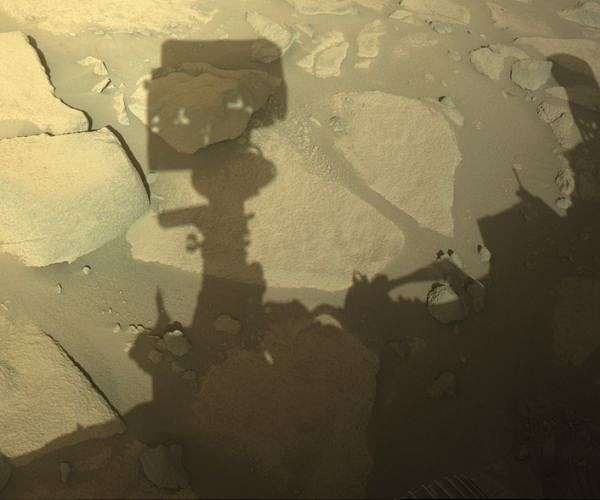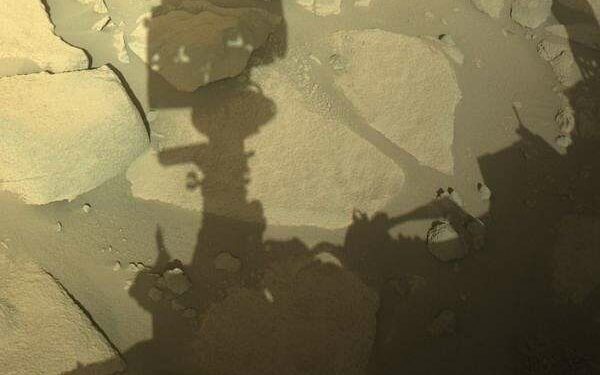
AI enhancements drive Mars rover discoveries
by Clarence Oxford
Los Angeles CA (SPX) Jul 17, 2024
Artificial intelligence is transforming how scientists analyze rock samples collected by the Perseverance rover on Mars.
For nearly three years, Perseverance has been utilizing AI to autonomously identify minerals in Martian rocks. This innovative use of AI on Mars marks a significant step toward creating “smart” spacecraft capable of independent scientific exploration.
The AI technology enhances the capabilities of PIXL (Planetary Instrument for X-ray Lithochemistry), an advanced spectrometer developed by NASA’s Jet Propulsion Laboratory. By mapping the chemical composition of rock surfaces, PIXL helps scientists evaluate whether ancient Martian rocks could have supported microbial life.
Known as “adaptive sampling,” the AI-driven software autonomously positions PIXL to closely analyze rock targets, identifying minerals in real-time without requiring direct input from Earth.
“We use PIXL’s AI to home in on key science,” said Abigail Allwood of JPL, the instrument’s principal investigator. “Without it, you’d see a hint of something interesting in the data and then need to rescan the rock to study it more. This lets PIXL reach a conclusion without humans examining the data.”
Data from PIXL and other instruments guide scientists in deciding when to drill rock cores, which are sealed in titanium tubes for potential return to Earth as part of NASA’s Mars Sample Return campaign.
Adaptive sampling is just one way AI is used on Mars. NASA’s Curiosity rover, located about 2,300 miles from Perseverance, first implemented AI to autonomously select and laser-zap rocks for chemical analysis based on their shape and color. Perseverance uses this capability as well, alongside advanced AI that helps it navigate the Martian terrain independently. Both rovers still depend on detailed planning from mission control, but AI significantly enhances their efficiency.
“The idea behind PIXL’s adaptive sampling is to help scientists find the needle within a haystack of data, freeing up time and energy for them to focus on other things,” said Peter Lawson, who led the implementation of adaptive sampling before retiring from JPL. “Ultimately, it helps us gather the best science more quickly.”
Using AI to Position PIXL
AI assists PIXL in two main ways. Firstly, it ensures precise positioning of the instrument near rock targets. Positioned at the end of Perseverance’s robotic arm, PIXL uses its camera to maintain the correct distance between the instrument and the rock, adjusting for microscopic movements due to Mars’ temperature fluctuations.
“We have to make adjustments on the scale of micrometers to get the accuracy we need,” Allwood explained. “It gets close enough to the rock to raise the hairs on the back of an engineer’s neck.”
Creating a Mineral Map
Once properly positioned, PIXL scans a small area of the rock, using an X-ray beam to create a detailed chemical map. This map helps identify crucial minerals like carbonates, which suggest past water activity, or phosphates, which could indicate the presence of nutrients for ancient microbes.
Although scientists cannot predict which X-ray scans will reveal specific minerals, the AI allows PIXL to pause and gather more data on significant findings automatically, a process known as “long dwell.” As machine learning improves, PIXL’s ability to focus on a broader range of minerals increases.
“PIXL is kind of a Swiss army knife in that it can be configured depending on what the scientists are looking for at a given time,” said David Thompson of JPL, who helped develop the software. “Mars is a great place to test out AI since we have regular communications each day, giving us a chance to make tweaks along the way.”
Future missions to more distant locations in the solar system will require even greater autonomy due to longer communication delays. Therefore, developing advanced AI capabilities remains a key focus for NASA’s ongoing exploration efforts.
Related Links
Perseverance Mars Rover
Mars News and Information at MarsDaily.com
Lunar Dreams and more












